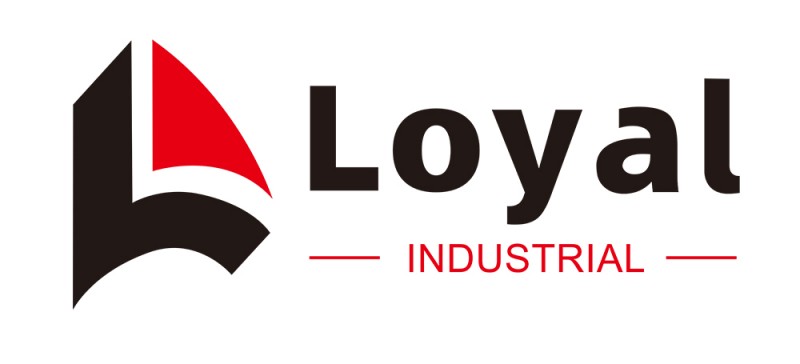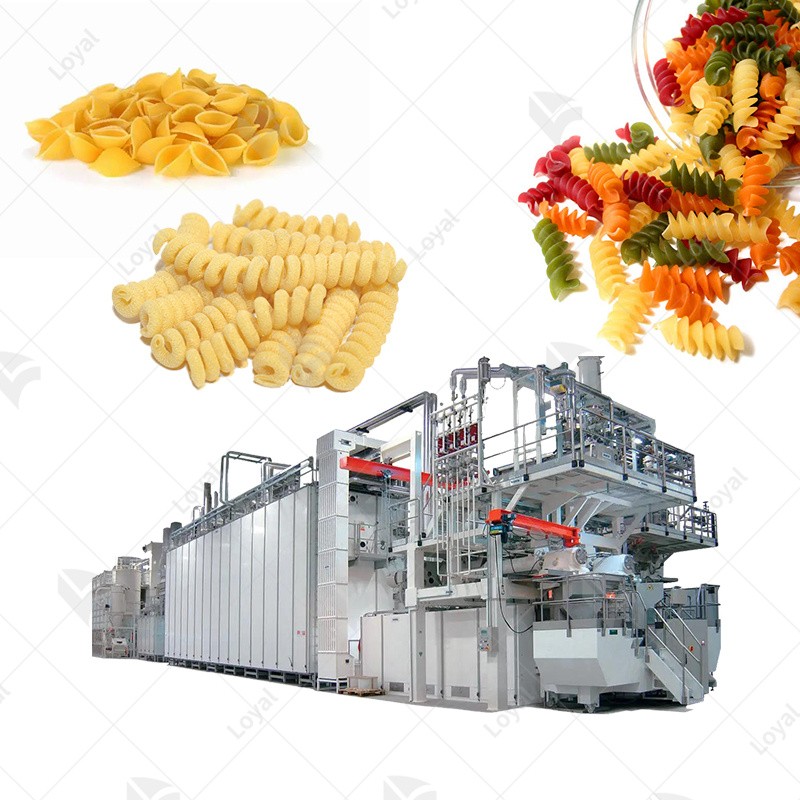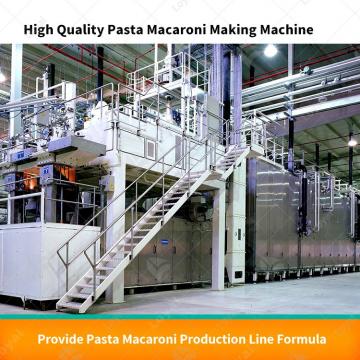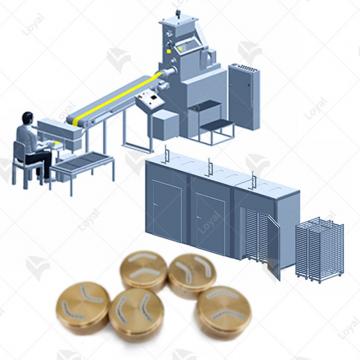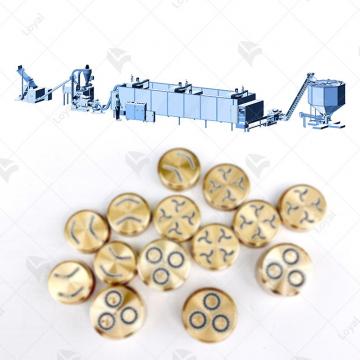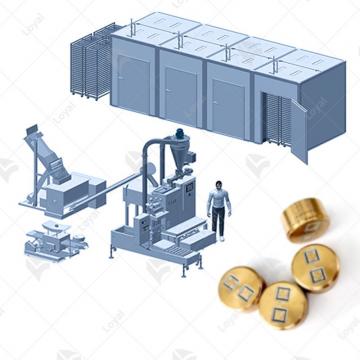Fully Automatic Macaroni Machine Redefining Efficiency Guide
Fully Automatic Macaroni Machine Redefining Efficiency Guide
Introduction
The modern macaroni production industry is undergoing a revolutionary transformation driven by innovation in manufacturing processes. This article explores the groundbreaking impact of fully automatic macaroni production machines, showcasing their role in redefining efficiency standards within the industry.The Macaroni Pasta Production Line technology of Shandong Luoya Industrial Co., Ltd. has introduced advanced technologies from lazzaretti and Pasta Technologies Group (PTG) .
Evolution of Macaroni Production Technology
To understand the significance of fully automatic machines, we delve into the historical background of macaroni production methods. Traditional manufacturing faced challenges that paved the way for innovation, leading to a crucial transition from manual to automated processes. The challenges in traditional methods included labor-intensive tasks, inconsistency in product quality, and limitations in production capacity. As the demand for macaroni increased, manufacturers sought more efficient and reliable solutions, setting the stage for the evolution of macaroni production technology.
With the advent of automation, the macaroni production industry underwent a transformative journey. The integration of machinery not only addressed the challenges of manual production but also opened new possibilities for increased efficiency, precision, and scalability. Automated processes revolutionized the way macaroni was manufactured, marking a pivotal moment in the history of the industry.
Fully Automatic Macaroni Production Machines
This section provides an in-depth exploration of fully automatic macaroni production machines, emphasizing the key features and advanced technologies that propel automation in the industry. The focus is on how these machines redefine efficiency standards, setting a new benchmark for macaroni production. Fully automatic macaroni production machines represent the pinnacle of technological innovation in the industry. These machines are equipped with cutting-edge features such as automated mixing, precise shaping, intelligent drying methods, and advanced packaging systems.
The key features of fully automatic machines contribute to a seamless and continuous production process, eliminating the bottlenecks associated with manual or semi-automated methods. The integration of artificial intelligence and machine learning allows these machines to adapt to varying conditions, optimizing production efficiency and ensuring consistent product quality. The precision achieved through automation not only enhances efficiency but also sets a new standard for the quality and uniformity of macaroni products.
In essence, fully automatic macaroni production machines redefine efficiency by streamlining every aspect of the manufacturing process. The industry benchmark is elevated as these machines minimize errors, reduce production time, and increase overall output. As we explore the technological advancements in this field, it becomes evident that fully automatic macaroni production machines are at the forefront of shaping the future of macaroni manufacturing.
Components of Fully Automatic Machines
A detailed breakdown of the components within fully automatic macaroni production machines sheds light on their inner workings. Each component's role in the manufacturing process is explained, with a specific emphasis on the innovative aspects that contribute to elevated efficiency standards.
Efficiency Enhancement Through Automation
An analysis of how fully automatic machines reshape efficiency in macaroni production takes center stage. Through a comparative study with traditional and semi-automated methods, the article highlights streamlined processes and minimized errors achieved through groundbreaking innovation.
Technological Advancements in Macaroni Production
This section explores recent technological innovations, including the integration of artificial intelligence and machine learning. It showcases the cutting-edge features that set the industry standard, with a focus on how these advancements contribute to enhanced efficiency in macaroni production.
Case Studies
Real-world examples featuring prominent brands such as Banza, Colavita, Garofalo, and Whole Foods 365 Everyday Value illustrate successful implementation of fully automatic macaroni production machines. These case studies serve as tangible evidence of increased efficiency and the establishment of new industry standards.
Future Trends in Macaroni Manufacturing
An examination of upcoming trends and developments in the macaroni production industry provides insights into the future of fully automatic technology. Predictions highlight anticipated advancements that will further redefine efficiency standards and shape the trajectory of macaroni manufacturing.
Challenges and Solutions
The article addresses challenges faced in adopting fully automatic macaroni production, offering proposed solutions and strategies. It emphasizes the industry's adaptability to the dynamic landscape, ensuring a smooth transition to automated processes.
Conclusion
In conclusion, the article recaps how fully automatic macaroni production machines redefine efficiency standards. It concludes with final thoughts on the continuous innovation shaping the future of macaroni manufacturing and emphasizes the industry's commitment to setting and exceeding efficiency benchmarks.
Common Questions about Fully Automatic Macaroni Production Machines
1. What defines a fully automatic macaroni production machine?
A: A fully automatic macaroni production machine is a state-of-the-art manufacturing system designed to handle various stages of macaroni production without continuous human intervention. It incorporates advanced technologies for mixing, shaping, drying, cutting, and packaging, ensuring an efficient and streamlined process.
2. How does a fully automatic machine differ from traditional methods?
A: Unlike traditional methods that rely heavily on manual labor and supervision, fully automatic machines operate seamlessly, minimizing the need for human intervention. These machines are equipped with advanced features, such as smart sensors and real-time data analytics, contributing to increased efficiency and reduced errors.
3. What are the key features of fully automatic macaroni production machines?
A: Key features include automated mixing and kneading, precise shaping, advanced drying methods, intelligent cutting mechanisms, and automated packaging systems. These features ensure consistent product quality, optimal production efficiency, and minimized variations in macaroni dimensions.
4. Which brands have successfully implemented fully automatic machines?
A: Renowned brands such as Banza, Colavita, Garofalo, and Whole Foods 365 Everyday Value have embraced fully automatic macaroni production machines with notable success. These brands serve as prime examples of the transformative impact of automation, experiencing increased efficiency and improved product quality.
5. How do fully automatic machines contribute to efficiency enhancement?
A: Fully automatic machines elevate efficiency by streamlining the entire production process. The integration of advanced technologies reduces production time, minimizes errors, and ensures a consistent output. The automated nature of these machines allows for uninterrupted production, meeting the growing demands of the modern macaroni market.
6. Are there challenges associated with adopting fully automatic macaroni production?
A: While the benefits are substantial, challenges may include initial implementation costs, the need for specialized training, and potential resistance to change. However, the long-term advantages in terms of increased productivity and enhanced product quality often outweigh these initial challenges.
